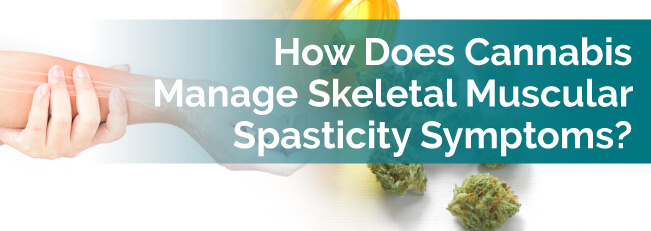
Having chronic muscular spasticity is difficult to deal with. Considering it most commonly comes from multiple sclerosis and cerebral palsy, it often progresses to debilitating levels.
Because there’s no cure, we develop treatments that relieve its symptoms to make patients more comfortable while we search for one. In general, we try to improve the patient’s independence, reduce the frequency and severity of their muscle contractions, and improving motor function. During our pursuit, we’ve discovered only a limited number of relief methods.
The few options we have result in varying degrees of relief. Doctors will prescribe pain relievers, muscle relaxants and anti-anxiety medications, but they have a large chance of dependency. While physical therapy can help patients able to do it, it can only do so much as the underlying condition progresses.
It’s no wonder why many patients with muscular spasticity try medical marijuana to help their health issues. When you use cannabis properly, it can supplement or sometimes replace conventional treatments for spasticity. We can use it to manage some major symptoms of spasticity, such as these three:
As you can imagine, muscle spasms are the number one symptom associated with muscular spasticity. When someone has spasticity, the neurons responsible for movement become damaged, making your brain send movement signals you don’t want to send. This miscommunication causes your muscles to tense up and twitch.
To treat muscle spasms related to skeletal muscular spasticity, doctors often prescribe muscle relaxants or a benzodiazepine, a type of anxiety medicine that also affects movement signals. Both kinds of drugs should only be used for a short period of time to avoid resistance and dependency, making them unusable for chronic muscle spasms.
Numerous studies have examined the effect of medical marijuana on muscle spasms related to spasticity. The subjects involved in the research found that they noticed less muscular spasticity symptoms while using medicinal cannabis. In addition, most data demonstrated a positive effect observable by the researchers, too.
Since marijuana relaxes the mind and body, this should come as no surprise. However, you must use the right kind of medical marijuana to experience the most muscle spasm relief. Indica strains of marijuana have a full-body effect, making them appropriate for chronic muscle spasms felt all over the body.
When muscle spasticity results in so much stiffness and tension in your muscles, it makes for a very painful experience. Patients generally feel pain in their arms and legs, but some patients also feel it in their lower back. Regardless of where you hurt, having chronic pain makes it even harder to manage your day-to-day life.
If you experience enough pain to require medical attention, your doctor will probably recommend taking a painkiller. Over-the-counter painkillers can hurt your liver and don’t work well enough for cases of severe pain. While prescription painkillers pack more of a punch, they have a high risk of addiction.
Fortunately, pain relief is one of the most closely studied medical properties of cannabis. Both anecdotal and clinical evidence point to the cannabinoids in marijuana easing pain. Patients using marijuana for their physical pain may want to use an indica strain to take advantage of its full-body impact.
In addition to helping patients who experience muscle spasms and pain, we have evidence indicating cannabis could enhance motor function for folks with muscular spasticity. Studies focusing on marijuana’s ability to relieve muscle spasms have also examined its impact on patient mobility for MS patients — subjects found they could move more easily.
The experts know what they’re talking about. See a medical marijuana-positive physician or a dispensary budtender for more information.
For more information about how cannabis can be used to treat Intractable Skeletal Muscular Spasticity, check out our resources: